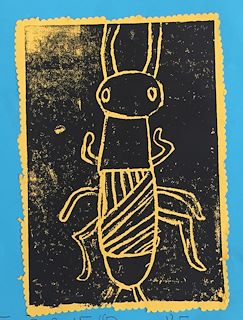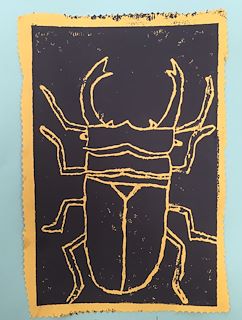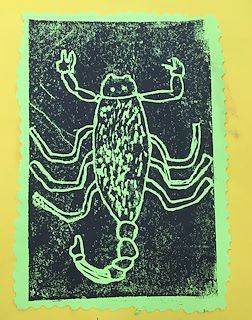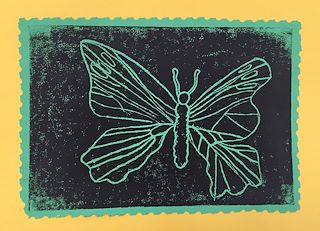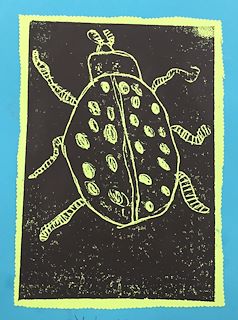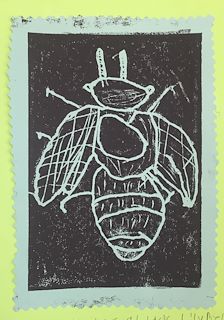or
I did a similar unit last year with second grade and it was a huge success. This year, we added in a poetry and technology element that really took it to the next level. To get started on this exciting printmaking unit, second graders did observational drawings of rubber insects, paying close attention to replicating the details they saw through different uses of line (short lines, crossed lines, curved, diagonal etc.) We started to discuss why people make art? Some students suggested people create for fun, to make other people happy, to or to serve a function. For inspiration, students became familiar with the life and work of current Latin American artist and print maker Rimer Cardillo. In the 1970's Cardillo started to create artwork in an effort to protest violence occurring against everyday citizens, himself included, by a militant regime. During this time, Cardillo's artwork often combined photography with printmaking and would feature enlarged insects with bright colors to invoke a science fiction feeling.

Rimer Cardillo working on one of his mixed media prints.
Rimer Cardillo, Cicadas Dog Day Announcer, 1978-1979
For our own prints, we traced our observational insect drawings onto a piece of foam and then redrew all of the lines we saw with a dull pencil, to make sure our design was pressed deep enough into the foam.
Next, we rolled ink over our foam plates and pulled up to three prints each making sure to have clean fingers at all times! Students were thrilled to see how much better their final print were after they became comfortable with the amount of ink that needed to be applied.
The next class, students cut out their prints with funky scissors, labeled properly and mounted to a colored paper. Before the bell rang, students scuffled around the room trading prints with their fellow artists!

To add another layer of learning to our art making, students worked on creating poetry about their insect prints with their classroom teachers. They read the book Joyful Noise: Poems for Two Voices by Richard Fleischman and acted out their stanzas with a partner. Then, with the help from their classroom teachers and the literacy teachers students wrote a poem about their insect they printed and recorded themselves reading their poetry with a partner. It all came alive, when their recording was turned into a QR code and displayed by their artwork, for viewers to scan and listen to while seeing the print that inspired their pros.
Students using QR code reader on tablets to listen to the poetry for each print.
Student Prints












